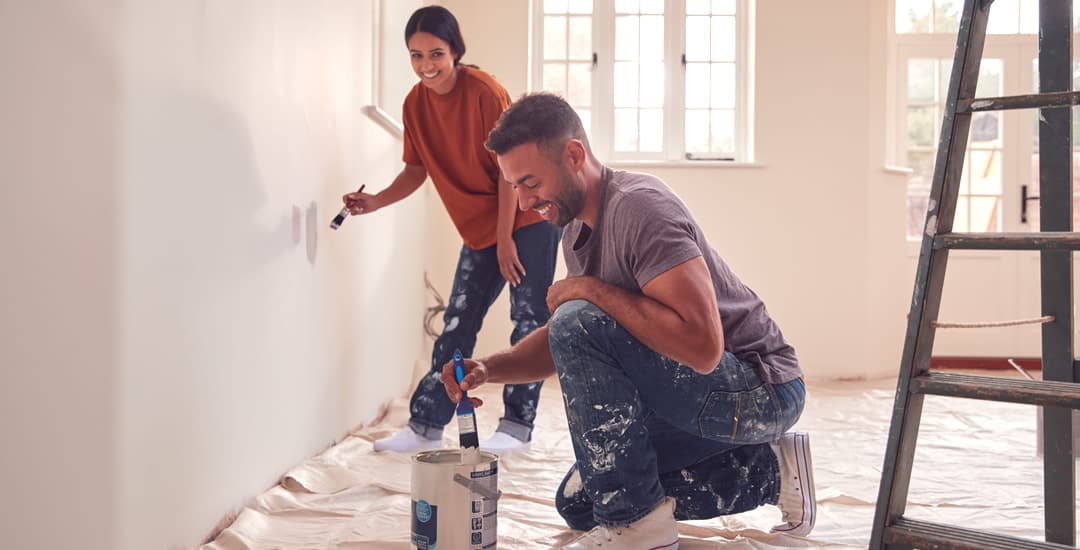
Do you paint first or do floors first? It might seem obvious that you should paint first in order to avoid getting splashes of paint on your new carpet or hard floor and potentially, ruining it before you’ve even finished the project; but surprisingly, this isn’t always the right move.
The correct answer to which comes first (floors or walls) depends on what type of flooring you’re getting, the state of your walls, and who is doing the work – as in, you or a professional.
The simple answer to “do you paint first or do floors first,” is that if you’re doing both floor and walls yourself, you’ll probably want to paint first, for the “don’t splash the new floor” reason mentioned above.
However, if you’re hiring a professional for either the painting part or both painting and flooring, generally you’re best advised to do the floor first and the painting second… For reasons that will hopefully make sense once I’ve explained them.
These include, but are not limited to, “if someone claims to be a professional painter, their ability to avoid spilling paint on the floor should be implied.”
Anyway. In this blog post I’ll tell you which comes first, floors or walls for various different levels of expertise, plus where your blinds come into it/where along the pipeline your blinds should be chosen and hung too.
Spoiler: “do the blinds at the very end” is once more a seemingly-obvious but not entirely accurate answer…
Do you paint first or do floors first if you’re doing it yourself?
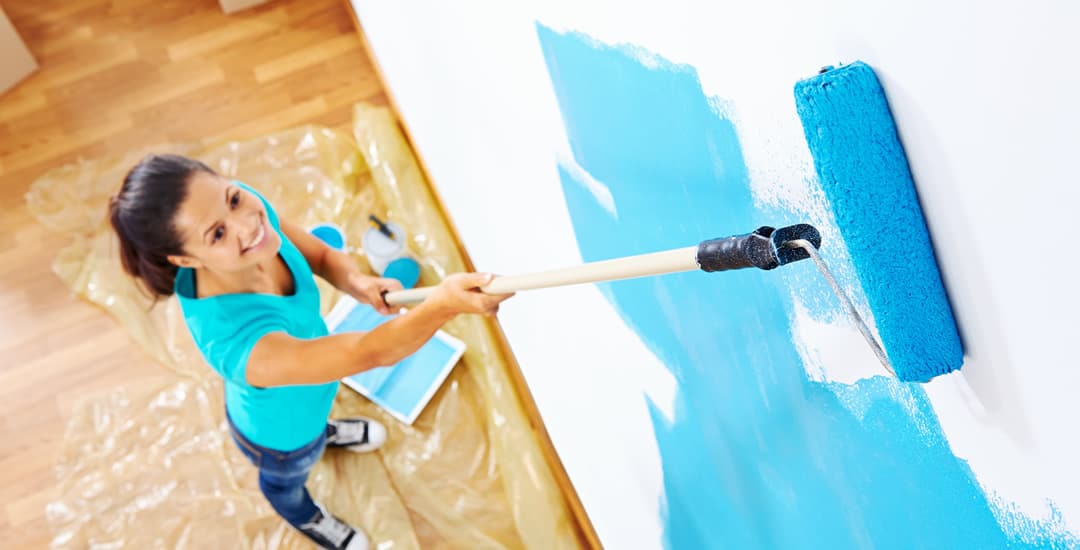
If you’re planning to either do the painting yourself or both the painting and the floor and you’re not a professional decorator, I strongly advise you to do the walls first.
By taking this approach you can splash, spill, miss the dust sheet, and smear painty fingerprints on the old floor with compunction and not have to worry.
This answer applies even if you’re getting a pro in to do the flooring part, as success (and the condition of your floor) still relies upon your own skills with a pot of paint and some bristles, not to mention your ability to secure a dust sheet effectively.
Do you paint first or do floors first if you’re hiring a professional?
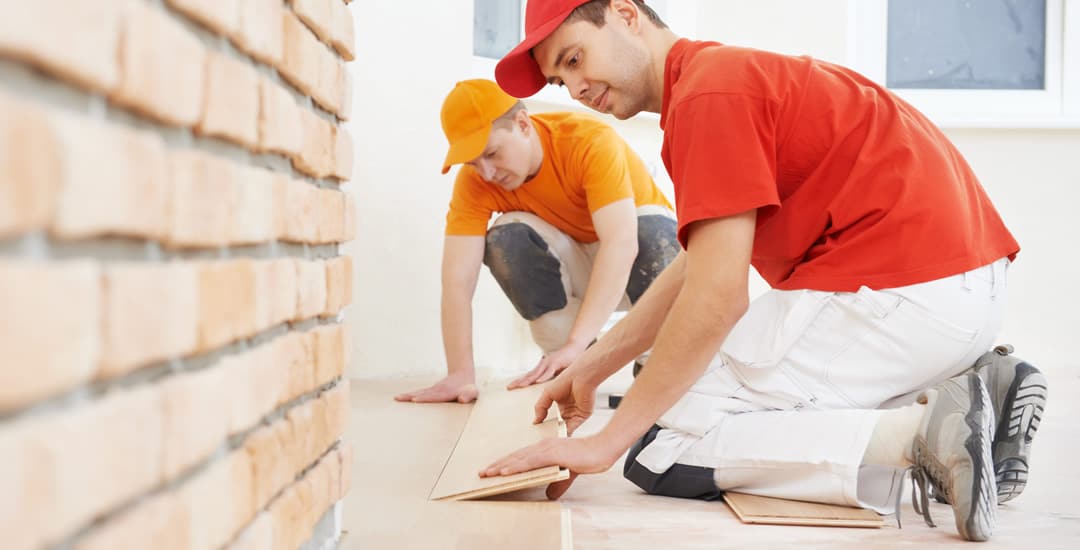
Ok. As I mentioned in the paragraph above, if you’re hiring a professional flooring bod but not a professional painter, default back to “paint first,” so that you don’t need to addendum this with “or cry later.”
However, if you’re having a professional to do the painting, you will probably want to do the floors first, and the painting second.
One potential exception to this is if you’re planning to do the flooring yourself, depending on what type of flooring this is and how competent you are. If there is a chance that you’re putting down the flooring is going to damage the paint beyond the point that simple touch-ups after the fact will be able to fix it, you might want to do the floors first and the paint second, assuming you are really careful to avoid paint meeting floor!
Anyway, this caveat aside, if you ask a professional painter they will almost certainly tell you that it is easier for them and achieves the best result for you if the floor goes in first.
This is because they are (or should be) confident in their ability to keep the paint where it is supposed to go and off the floor, and because they won’t want to have to make a return trip to touch up any scuffs or marks, or to finish off when the skirting board has been fitted.
Which comes first (floors or walls) when making your design choices?
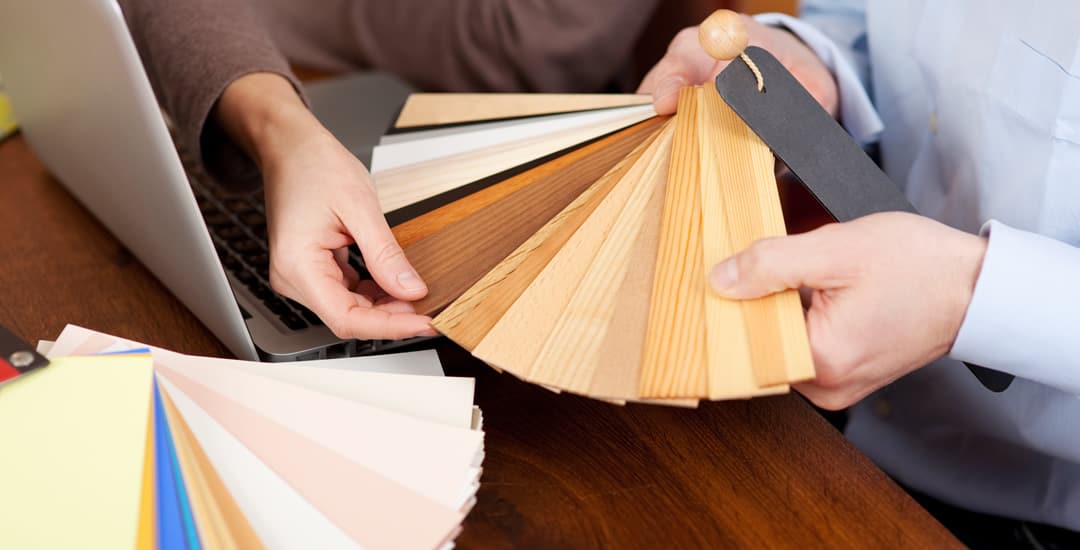
The practical part of the process aside, which should come first out of floors and walls when you’re deciding what to buy or how to do it? For instance, if you’re choosing between paint and wallpaper, and for the floors, carpet, wooden flooring, or something else.
This sort of depends; your first choice needs to be of the type of floor/wall covering you want, and this decision isn’t one that can be split in terms of deciding one and having the other follow.
The paint/wallpaper question and the flooring type question need to be handled as one, and from there, you can determine which one will dictate the colour or style of the room.
For instance, if your flooring choice is carpet, the range of colours and styles that this involves choosing between probably means that you’d lead with the flooring and then plan the walls around it. However, wallpaper rather than paint comes with much the degree of gravitas; so if you’re going for both carpet and wallpaper, this is another decision that can’t really be split, or that should be handled carefully to avoid clashes or things not quite going to plan.
With paint and most neutral hard flooring options (and some but not all choices for tiles) you can take your pick on which you lead with; with the caveat that if you’re going with either wallpaper or carpet but not both, this should probably be your starting point.
Where do blinds come into play?
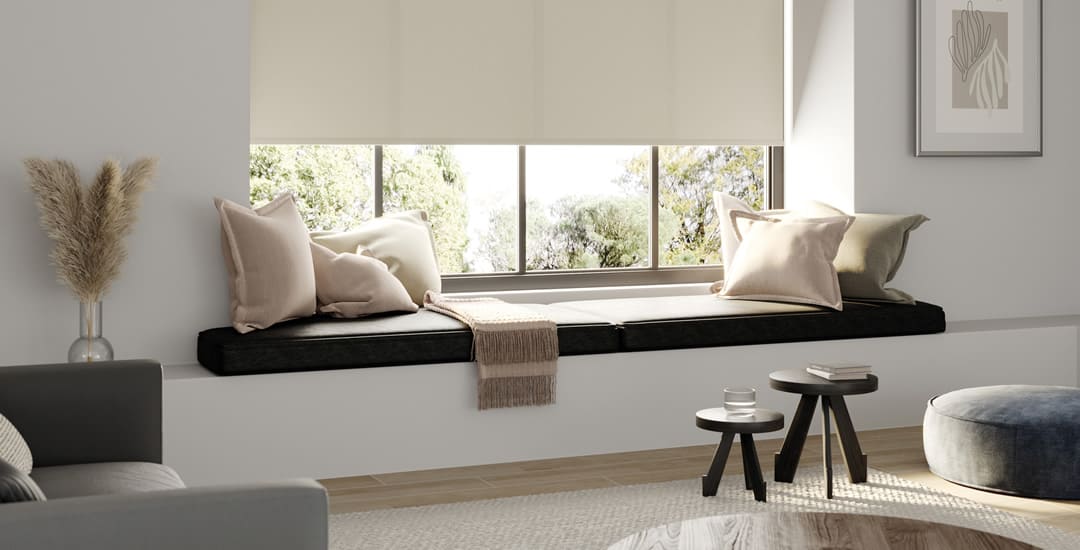
In terms of your design choices, it is definitely worth looking around for window blinds to begin to shape your preferences on the type of blind and potentially, the colours and styles you like early on. If you have a firm favourite or a very specific style in mind, knowing this can shape your floor/wall choices, or at least, factor into them.
If you don’t have a clear idea in mind or want to get the larger parts of things, the floor and walls, squared away before choosing blinds to complement them, that’s fine too.
When it comes to where blinds come into play logistically in the practical running order of walls, flooring and the rest… You’d think you’d put up the blinds last, right? Well, not exactly.
Any prep needed before painting the walls (like removing old paint/wallpaper) should be handled first, but then I suggest that you do your measuring up and drilling for the blind’s brackets before you start painting and finishing the walls.
Then you can simply fix the brackets for the blinds when the walls are all done, without the need to mark the paint or wallpaper or potentially damage anything in the process.




